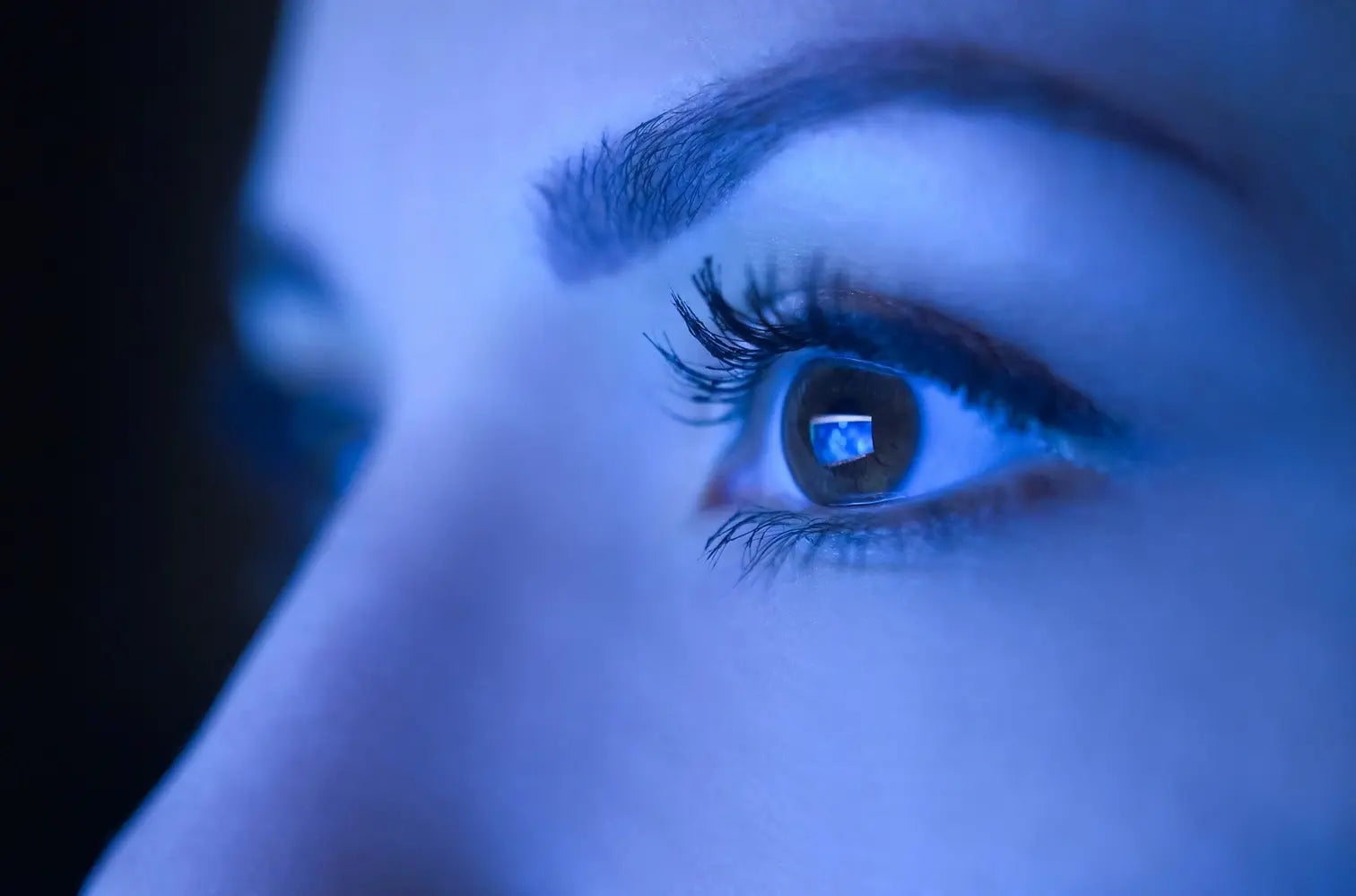What Are Environmental Stressors?
We interact with multiple stressors almost constantly throughout our lives – invisible adversaries capable of damaging our health. Day to day, we navigate through many of these elements that heavily influence the well-being of our skin. These stressors range from subtle yet persistent pollutants lingering in the air to the relentless ultraviolet (UV) radiation from the sun – all casting an invisible veil of potential harm. For example, research shows that “air pollution, especially PM, PHA, and ozone, causes premature skin aging, as evidenced by the appearance of wrinkles, senile lentigo, and dry, itchy skin after exposure to air pollutants” . 1
Furthermore, the constant presence of modern technology exposes our skin to a never-ending stream of blue light emitted by screens, adding another layer to the environmental challenges our skin faces. Similarly, infrared radiation, while sometimes employed beneficially in therapeutic settings, can become a foe when prolonged exposure contributes to the generation of free radicals, including reactive oxygen species (ROS), during natural cellular processes. Free radicals are unstable molecules that environmental stressors can generate. They cause harm throughout the body that can cascade into extreme damage to DNA, proteins, and lipids.2 While the body produces ROS, an imbalance leading to oxidative stress can be detrimental. High levels of ROS can contribute to various skin diseases, aging, and inflammation .2

How Do Environmental Stressors Affect the Skin?
- UV Radiation from the sun is a major environmental factor contributing to premature skin aging. It consists of UVA, UVB, and UVC rays, with UVA and UVB being the most relevant to skin health.
-
High-energy visible (HEV) light from the sun may cause up to half of the free radicals produced in the skin.3
-
Blue light, a component of HEV light, is emitted by electronic devices like smartphones and computers. While low doses of blue light may be beneficial for treating proliferative skin diseases and acne, prolonged exposure can generate free radicals, contributing to skin damage.3
-
Infrared (IR) radiation, while beneficial in therapeutic settings, can be detrimental in excessive amounts. Prolonged exposure generates free radicals, which can damage skin via photoaging. Additionally, Infrared light penetrates deep into this skin to the dermis, where it is converted to heat. The damaging effects of heat include degrading proteins, such as collagen and elastin fibers, which contribute to solar elastosis, premature skin aging and skin sagging .3
-
Airborne pollutants, such as particulate matter can increase reactive oxygen species (ROS) and inflammation in the skin. This exacerbates UV damage and contributes to the appearance of photoaged skin.3
How to Guard Your Skin Against Environmental Stressors
Antioxidant-rich Skincare
Sunscreen with Broad-Spectrum Protection
Limit Screen Time
Protective Clothing
Environmental Detox
Treating Environmentally Stressed Skin
- Antioxidant Infusions infuse antioxidants directly into the skin. These treatments can help combat oxidative stress and rejuvenate the skin. Antioxidant-rich formulations can be applied topically or incorporated into more advanced treatments.
-
Consult with skin care professionals for personalized advice and treatments tailored to your skin's needs. Seeking expert guidance is invaluable, especially when dealing with specific skin concerns. Professional interventions, such as chemical peels or laser therapies administered by trained personnel, can effectively target and rectify various signs of environmental damage.
-
Microneedling is a minimally invasive procedure that stimulates collagen production and enhances the absorption of skincare products by using fine needles to create micro-injuries in the skin. It can be an effective treatment for addressing the effects of environmental stressors on the skin, promoting collagen renewal, and improving overall skin texture.
-
Adopting a targeted skin care routine is crucial for revitalizing environmentally stressed skin. Products containing potent antioxidants, hydrating agents, and collagen-boosting ingredients can contribute to the restoration of skin health. This may include usingpeptide face creams, body moisturizers, gel cleansers, serums, and specialized treatments recommended by skin care professionals. Consider the OneSkin topical skin careline, formulated with a revolutionary peptide that is scientifically proven to enhance your skin's natural collagen production*(4), contributing to a firmer and improved appearance.**Making lifestyle adjustments can also play a role in mitigating the impact of environmental stressors on the skin. Adequate hydration, a balanced diet rich in antioxidants, and minimizing direct sun exposure can complement professional treatments and at-home skin care routines.
- Modern life exposes skin to pollutants, UV radiation, blue light, and infrared radiation, accelerating aging.
- These environmental stressors generate free radicals, causing oxidative stress, DNA damage, protein damage, and aged skin.
- Protective measures include using antioxidant-rich skincare and broad-spectrum high SPF sunscreen, implementing a screen time limit, wearing protective clothing, and detoxifying the skin.
- Options for treating severely damaged skin include but are not limited to, antioxidant infusions, professional treatments like peels and lasers, microneedling, and targeted skincare with collagen-boosting ingredients.
- Combine lifestyle adjustments with professional treatments and at-home care to treat environmentally stressed skin effectively.



